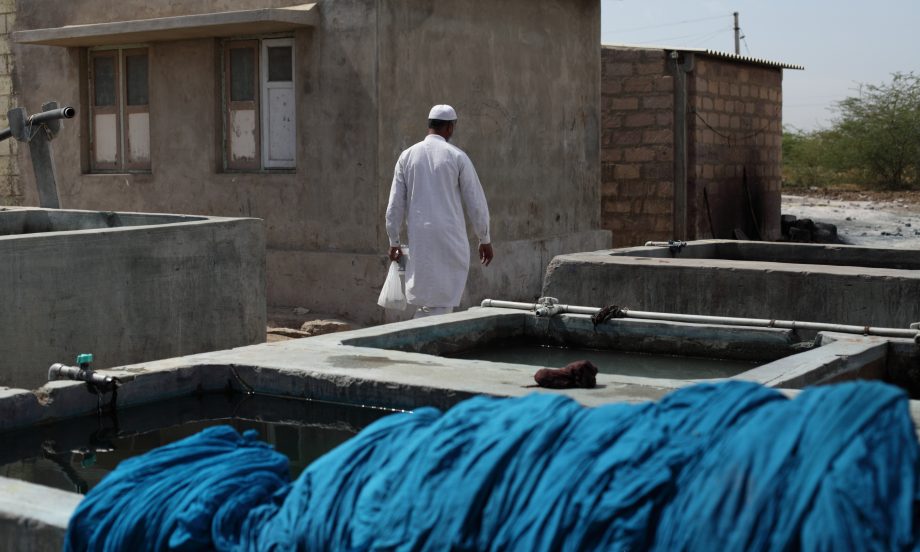Natural Dyes
Elinor Gallant
The Indian subcontinent boasts more than 300 endemic dye-producing plants, with different regions specialising in producing different colours from the flowering plants, trees and shrubs found locally. And the key to the vibrancy and longevity of the colours we see dating back thousands of years is the treatment of the cloth to allow the colour to fully penetrate the fibres, and the development of techniques to permanently bind the colour to the cloth – what is called a mordant, and is generally a metal oxide.
Before printing the cloth is treated with harda, a powdered yellow fruit from the myroballan tree (teminalia chebula), which is a natural source of tannic acid. This enables subsequent dyes to be absorbed evenly by the fibres.
The madder plant (Rubia family, most often Rubia cordifolia, Indian madder or majeet) is a small shrub whose roots are used to produce vibrant reds, as it contains naturally occurring alizarin. A paste containing alum is printed onto the cloth first (called begar paste and often with a temporary tint added to allow the printer to see this almost invisible paste). The paste acts as the mordant, allowing the dye to adhere to the fibres when it is soaked in the dye bath of madder (alizarin) afterwards. Alum and alizarin combine to produce a vibrant rusty red. Red madder is the most fast of the natural reds, hence a Hindi custom that it symbolises the permanency of love, which can never be washed away.
Until the nineteenth century only natural dyes were used, but as chemical dyes were developed in the West (Alizarin in 1869) the world embraced these cheap and less time consuming alternatives. However a case may be made that natural dyes can strengthen cloth, rather than weakening it, and will in fact improve with age rather than fading.
It is also worth considering the environmental consequences of natural verses chemical dyes. With so much water used in the process, both the source of the water and the subsequent discharge must be considered. Water steeped in chemicals as opposed to natural, and what may be argued to be more eco-friendly products, may appear an obvious argument for natural dyes, and certainly historically dangerous (and now banned) chemicals were incredibly harmful, but the matter of an environmentally (and economically) sustainable printed textile industry is a complex one.

